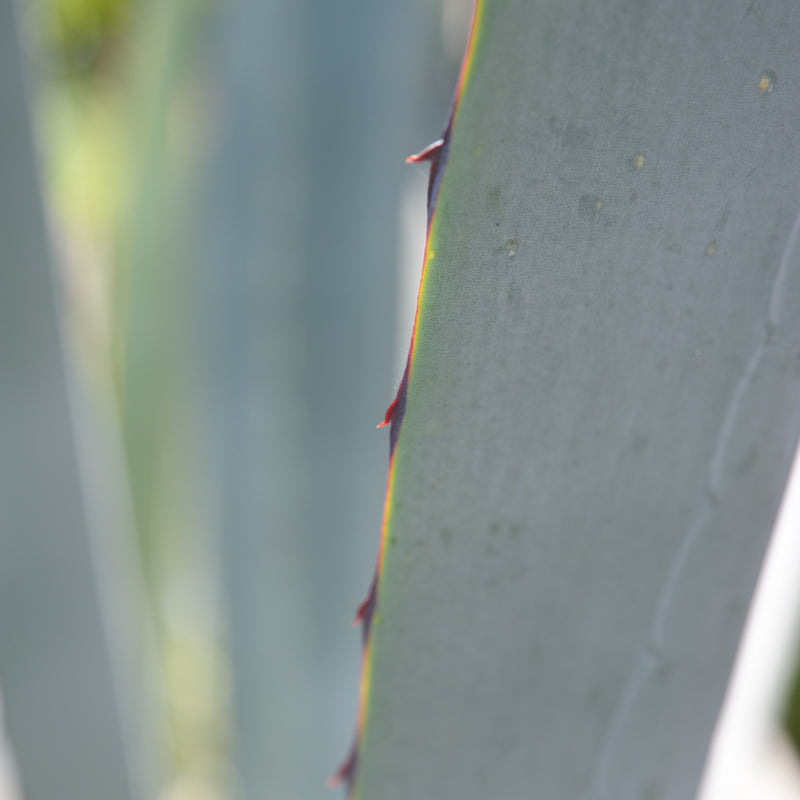Mezcal History
Etymology
The word “Mezcal” is derived from two words in the indigenous Mexican Nahuatl (Na-wat-al) language: “cooked” and “agave”. And initially “mezcal” was used to denote any agave distillate – where agave was cooked, fermented, and then distilled. This would include modern day Tequila.
Origin
There is evidence of alcohols derived from agave being made in Mexico as far back as 200 AD. Initially this was in the form of Pulque – fermented raw agave sap. At some point, this evolved into spirits distilled from fermented cooked agave, which became known as Mezcal or vino-de-mezcal.
The earliest written reference to mezcal is from 1608 – nearly 100 years after the after the arrival of the Spanish Conquistadors. It has therefore been assumed that the Spanish introduced distillation.
It's an open debate whether mezcal existed prior to this. Given the widespread use of agave as a source of alcohol (in pulque), and evidence of Pre-Columbian distillation, there's a strong case that it did. But there is no explicit evidence of the distillation of agave, and it is also strange that there is no written reference given that writing was common practice and highly developed.
In any case – Mezcal was well established by the 17th Century.
Tequila
In order to understand the history of Mezcal, it’s important to understand the history of Tequila, and where they parted ways.
In late 17th Century in the town of Tequila in the state of Jalisco, a Spanish nobleman, Pedro Sánchez de Tagle, became the first person to mass produce mezcal. An industry was built in the area and taxed by the local governor. By the mid 18th Century the Cuevo family were given the first official licence to commercially produce mezcal by the Spanish King Carlos IV. This protected their interest throughout periods of prohibition and cemented “mezcal-from-tequila” as the preeminent distillate in Mexico. To differentiate them from smaller (often illegal) operations, these mezcals became known as “Tequila Extract”, shortened to “Tequila” by the Sauza family when they began exporting to the United States in the late 19th Century. Sauza are also credited for identifying the blue agave as the ideal base for Tequila.
By the mid 1900s tequila was big business. In order to protect the industry, the Mexican government created the Tequila D.O. in the 1970s. It stated that tequila can be made in 5 states – centred on, and dominated by, the state of Jalisco – and that fermented sugars must derive from 51% blue agave, meaning up to 49% can come from other sources - normally refined sugar - with a large allowance for additives. Modern tequila was born.
Mezcal
Meanwhile, outside of the 5 states of the Tequila DO, agave spirits continue to be known as Mezcal.
Following the success of Tequila, there was some effort made to commercialise Mezcal in the mid 1900s. But the results were unconvincing. The process was rushed and without the allure of the name “tequila” these industrial mezcals (such as Gusanao Rojo or Monte Alban) were aimed at the bottom of the market – cutting corners and focusing on marketing gimmicks, such as the infamous worm, rather than quality juice. Mezcal became the “dare shot” – considered in urban Mexico and the US more of a punishment than a pleasure.
But outside of the urban areas, in the mountains – where roadless communities had existed virtually unchanged for centuries – real artisanal mezcal was still being made. These mezcals are made without any modern equipment. Organically grown agave are cooked in fire powered pit ovens, crushed by hand or by animals, fermented with local air-bourne yeasts, and distilled in either copper or clay pots, heated on an open fire. Measurements and decisions are made by the experienced mezcalero, relying solely on taste, touch and smell. A skill passed down through the generations from father to son. The results of this process are amazing – unsurprisingly the small scale and artisanal methods create more depth and variety. But beyond this, something about this hand-made process and lack of measurements gives the liquid a real sense of soul, with all its inconsistencies and delicious imperfections.
In the late 1990s, helped by the likes of brands such as Del Maguey and Pierde Almas, these artisanal mezcals started to get recognised as complex, sophisticated spirits and became highly sort after in both Mexico and the US. In ’94 a D.O. was created, both to protect the quality of Mezcal – specifying that it must be made from 100% agave of any type – and to protect the geography of mezcal – limiting it to 9 states within Mexico. The D.O. also set out to help distinguish between the commercialised, factory made mezcals, and the traditional village made mountain mezcals. It delineates three categories of mezcal: Mezcal – which can be mass produced in a similar way to tequila (diffusors, cultivated yeasts, column stills). Mezcal Artisanal – made using the traditional methods described above and distilled in a copper alembic. And Mezcal Ancestral – same techniques but using a clay pot still. Most mezcal in the UK is Artisanal. As is Pensador.




